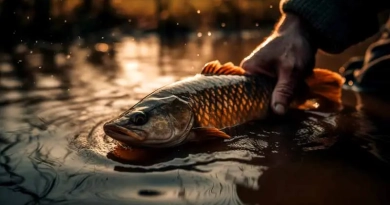
How Do I Cast A Fishing Line Properly?
Mastering the Cast: The Art of Throwing a Fishing Line
Beneath the early dawn sky, as the gentle ripples of the water beckon, the art of casting a fishing line stands as a fundamental skill for any angler—a rite of passage that turns the novice into a seasoned fisherman. Today, as the cool breeze plays across the water, I find myself pondering a crucial question that every angler has grappled with: “How do I cast a fishing line properly?”
Delving Deeper: The Intricacies of a Proper Cast
The act of casting a fishing line transcends mere mechanics—it’s a nuanced ballet that demands precision, timing, and an intimate dialogue with nature. This dance, performed on the banks of streams and lakes or the decks of boats, is not just about reaching the water; it’s about reaching the fish in ways that provoke them to bite. Each cast is a line of communication thrown into the natural world, a message sent with the hope of a response.
Exploring the Techniques: Varied Approaches for Diverse Conditions
In the realm of angling, each casting technique has evolved to meet the challenges of different environments and target species. Here’s a closer look at the nuanced world of casting techniques:
- Overhead Cast: The quintessential cast, it is versatile enough to be employed in virtually any fishing scenario. Whether you’re casting from the shore of a lake, a riverbank, or a sea pier, the overhead cast is your fundamental tool. This technique is especially effective when you have a clear, open space allowing for a full swing of the rod. The beauty of this cast lies in its simplicity and effectiveness, making it suitable for both beginners and seasoned anglers.
- Side Cast: This technique comes into play in environments constrained by space—such as under tree branches or alongside overgrown riverbanks where an overhead cast is impractical. The side cast involves swinging the rod horizontally rather than vertically, allowing the lure to skim close to the water’s surface, navigating through tight spaces with precision.
- Roll Cast: Unique to the world of fly fishing, the roll cast is essential when backcasts are hindered by obstructions like dense foliage or rocky outcrops. This technique uses the water’s surface tension to load the rod with energy, facilitating a smooth forward cast without the need for a backswing. The roll cast is not just a workaround for tight spaces; it’s a sophisticated skill that enhances an angler’s ability to deliver flies with delicacy and accuracy.
- Pitching and Flipping: These are finesse techniques beloved by bass anglers who need to navigate lures into intricate covers, like submerged logs, tight brush, or underneath docks. Pitching involves a longer, more precise toss of the lure with a controlled and smooth swing, while flipping is more about guiding the lure to drop quietly over short distances. Both require exceptional control and patience, attributes that define the skilled bass hunter.
Mastering the Mechanics: Detailed Breakdown
Each casting technique requires a mastery of certain fundamental mechanics, personalized through practice:
- Overhead Casting: This starts with the proper alignment of the body and the rod. The angler needs to coordinate the hand, arm, and body movements to create a fluid motion that translates into the travel of the lure. Mastery involves controlling the rod’s speed and release point to maximize both distance and accuracy.
- Roll Casting: The key lies in understanding the water dynamics and the rod’s loading phase. The angler must gauge the ‘D’ loop’s size and the forward stroke’s timing to ensure the line rolls smoothly across the water, turning over the fly at the intended target.
Tools for Refining Technique
- Practice Rod: Often lighter than regular rods, these tools are designed to mimic the feel and flex of standard rods while being safe and effective for dry land training.
- Marker Buoys: Placed in the water, these markers serve as visual targets to improve accuracy in various casting conditions, helping anglers to refine their distance judgment and precision.
- Video Tutorials: These digital resources are invaluable for visual learners, breaking down complex motions into understandable segments, often with slow-motion phases to highlight key movements.
Essential Resources for Learning and Growth
- Fishing Schools and Workshops: Nothing replaces hands-on learning from experienced instructors who can provide immediate feedback and personalized coaching.
- Fishing Clubs and Forums: These communities are rich with shared knowledge and experiences, offering support and insights that can significantly shorten the learning curve for novice anglers.
Casting a fishing line properly is an art form that requires understanding, practice, and continual refinement. Each technique brings its own flavor to the experience of fishing, and mastering them opens up new dimensions of the sport, enhancing not only the effectiveness but also the enjoyment of every fishing trip.
The Poetry of Casting
As the sun sets, casting its golden glow across the water, the true essence of fishing reveals itself not just in the catch, but in the beauty of the cast. Each motion, each adjustment, speaks to the heart of what it means to be an angler. Casting a line properly is not merely about technique; it’s about connecting with the water, understanding the environment, and becoming one with the moment.
Remember, the journey to mastering a proper cast is continuous, filled with learning, adjustments, and, most importantly, patience. Whether you’re casting over a tranquil lake or a rushing river, the perfect cast is a blend of knowledge, practice, and a deep appreciation for the craft of fishing.






